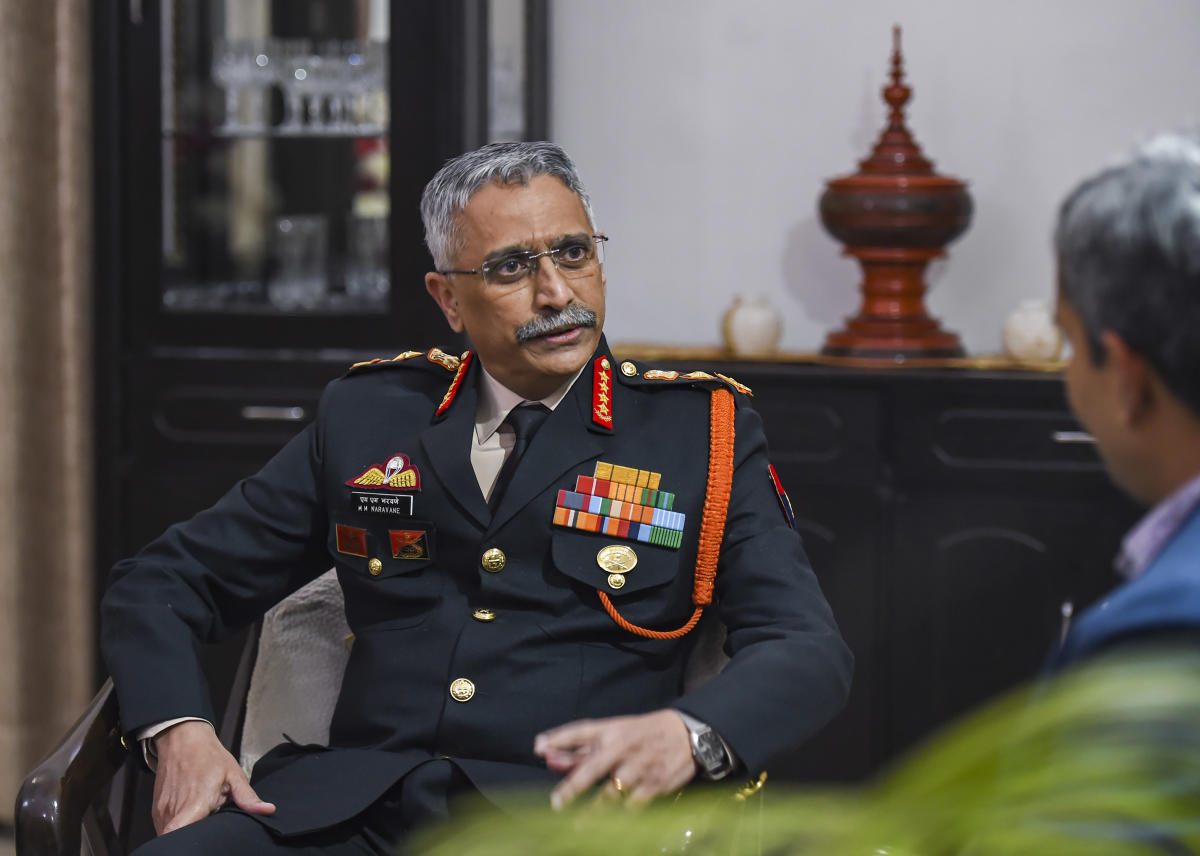NEW DELHI: Referring to India’s retaliation to the Chinese aggression in Galwan Valley, former Army chief General Manoj Mukund Naravane has said India as a country showed to the world that it is possible to take on the “neighbourhood bullying”.
Asked about if India’s retaliation to China during the Galwan clash diminished its stature at the global stage, General Naravane said, “Not only the PLA itself, it diminished the stature of China as a country in the global eyes. After this clash occured and we showed that it is possible to stand up to China who tries to bully its smaller neighbours.”
“Once we did that.. I think it is from Canada to Lithuania and Europe to the Philippines, everyone actually got that feeling that..yes…if you are fighting for what is correct and if your principle stands, it is possible to take a stand even against China. And we do not have always to be cowed down by the might they try to project. India as a country, showed to the world that its possible to take on the neighbourhood bullying. We showed, it can be done,” the former Army chief said during ‘Podcast with Smita Prakash’.
Naravane’s remarks came at a time when China’s People’s Liberation Army (PLA) troops tried to transgress the LAC in the Yangtse area of Tawang Sector in Arunachal Pradesh and unilaterally change the status quo but they went back to their locations due to timely intervention of Indian military commanders.
With China and India having a differing perception of LAC in certain areas, Gen Naravane said in the two sides patrol upto their perception line but there have been attempts by China to impede this in some areas
“We also patrol upto our perception line, they come up to their perception line. But while this is happening, if the patrols come face to face at the same time, then obviously there is a chance of a clash happening,” General Naravane said.
Asked about the Galwan clash in eastern Ladakh in which 20 Indian soldiers lost their lives in May 2020, General Naravane, who was then the Army Chief, said that the Chinese Army was not “allowing” the Indian Army to patrol to the usual point and triggered a more assertive response from the Indian side.
“It’s not that they came and they were not leaving, they were continuously patrolling up to where they thought they should be coming, but they were not allowing us to go where we ought to go. Therefore, we had to be more assertive and push them back. And that is where the clashes occurred and whether it is the North bank of Pangong Tso or in PP 15 where those unfortunate casualties took place,” he said.
Notably, armies of India and China in September completed the disengagement process in the Gogra Heights-Hot Springs area near Patrolling Point-15 in the eastern Ladakh sector, according to government sources.
The two sides have also completed verification of each other’s positions adapter pulling back troops from the friction point. The process started on September 8 after the discussions between the two sides during the 16th round of corps commander level. The two sides have now resolved all the friction points that came up after the May 2020 aggression by the Chinese army in an attempt to alter the status quo on the LAC.
The disengagement process included the dismantling of infrastructure built by the two sides at the location where they had deployed troops and other assets.
The previous locations from where they had disengaged included the Galwan area and the two banks of the Pangong lake in eastern Ladakh. India and China engaged in a standoff since April-May 2020 over the transgressions by the Chinese Army in multiple areas including the Finger area, Galwan Valley, Hot springs, and Kongrung Nala. The situation worsened after violent clashes with Chinese troops in Galwan Valley in June 2020. (ANI)
Also Read: China slams US General’s alarm over border infrastructure near Ladakh







